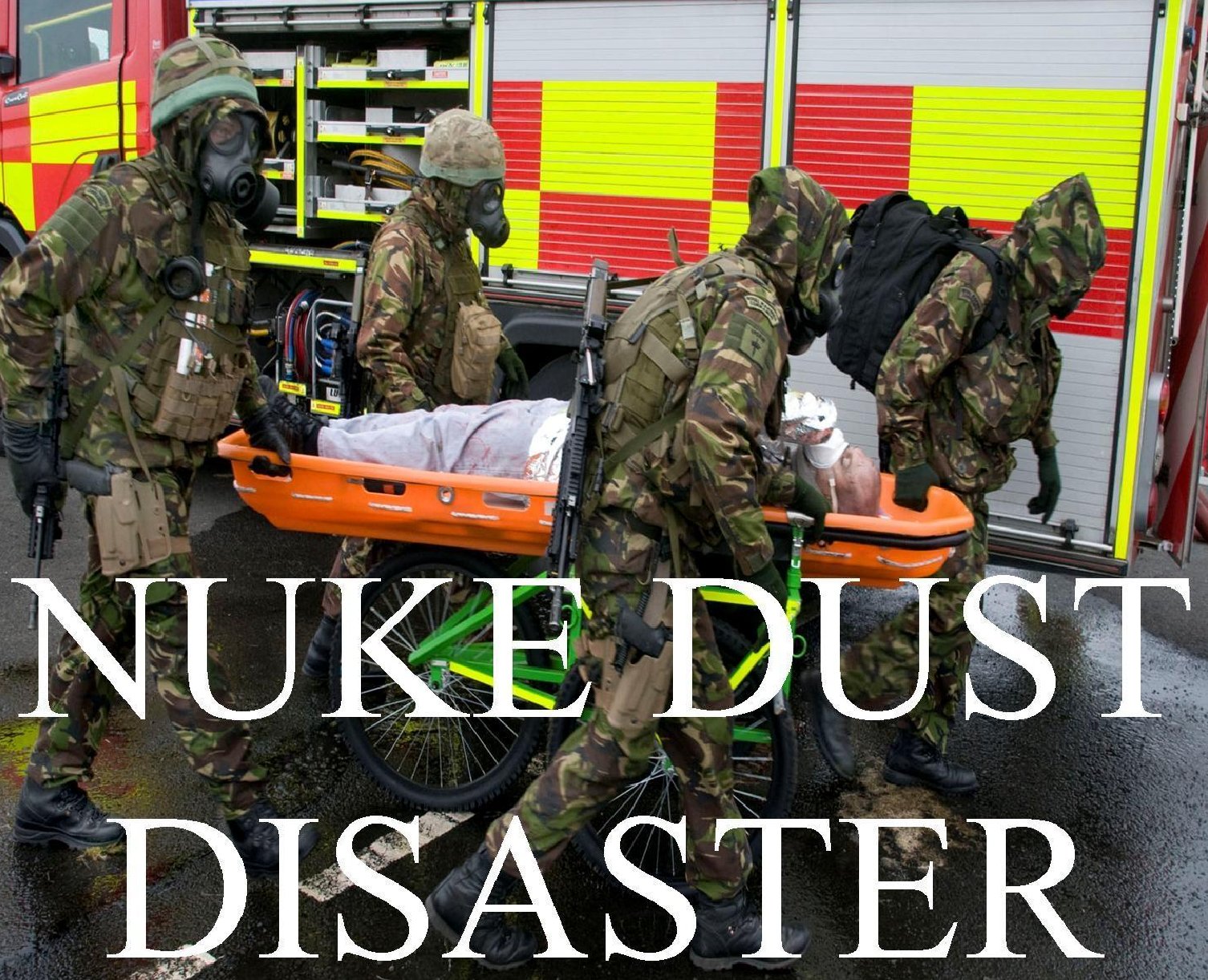Mock newspaper front page produced as part of Exercise Senator 2011
Among the Freedom of Information Act papers recently released by the Ministry of Defence about the 'Exercise Senator' nuclear emergency exercise is a mock-up newspaper cover illustrating the Ministry's view of how the media might sensationalise news about such a crisis.
Headlined 'Nuke Dust Disaster' and illustrated with a photo of armed troops wearing gas masks escorting a casualty away from the disaster scene, the report (available to download at the bottom of this article) warned of a “lethal plutonium cloud” spreading across Glasgow “putting thousands more residents at risk” as “armed marines patrolled the scene to the East of the city and officers in biological protection suits set up a decontamination area”.
The mock-up highlights the difficulties that the authorities would have in communicating effectively in the aftermath of a serious accident at a nuclear site or involving a nuclear consignment in transit. In the absence of trustworthy and timely information from the authorities, the media will look elsewhere for information and the stories which eventually reach the front page may not necessarily reflect the reality of the situation. Clumsy communication by the authorities themselves may also hamper the response to an accident, as we saw in the aftermath of the Fukushima nuclear disaster.
Exercise Senator was intended to test the response to an accident involving a nuclear weapons convoy transporting nuclear warheads along the M74 motorway to HM Naval Base Clyde, where the UK's Trident nuclear submarines are based. An insight into how the real-life media response would play out during such an emergency is given in the 'Local Authority and Emergency Services Information' (LAESI) document published by the Ministry of Defence to advise civil agencies on the roles they would be expected to play in an accident involving nuclear weapons. The LAESI guidelines tell us that “the police will lead in co-ordinating the provision of information to the media and that “pre-scripted press statements, including public safety information” would be “offered to the police to assist in their initial media briefing”.
The LAESI guidelines contain “key points for a public announcement” which presumably mirror the statement that the police would give in the aftermath of an accident. The announcement reads:
“An emergency occurred at (TIME) (PLACE) which involved a nuclear weapon.
There is no risk of an “atomic bomb” type of explosion.
There is a risk of radioactive particles being carried downwind.
The area immediately around the scene of the emergency is being evacuated for safety reasons.
People in the following areas (….name locations….) should take these precautions to minimise the hazard from inhaling or ingesting radioactive particles.
Go indoors and stay there.
Close all doors, windows and ventilators. Switch off any ventilation or air conditioning systems drawing air from outside the building.
Do not leave the shelter of a building until advised that you may do so by the police.
Do not try to collect children from school unless told to do so. The school authorities will look after them.
Keep tuned to local radio/TV (names stations, frequencies). Emergency services and Mod forces are responding to the emergency. You will be informed when these precautions are no longer necessary.”
Unfortunately many members of the public – with good reason – do not trust the government or the nuclear industry to provide honest or accurate information in the event of a crisis. It is likely to take much more than a police officer reading from a pre-scripted press release to reassure worried residents in the emergency area, who may have been separated from children and other family members or prevented from returning to their homes, that all they need to do is follow government instructions to remain safe.
